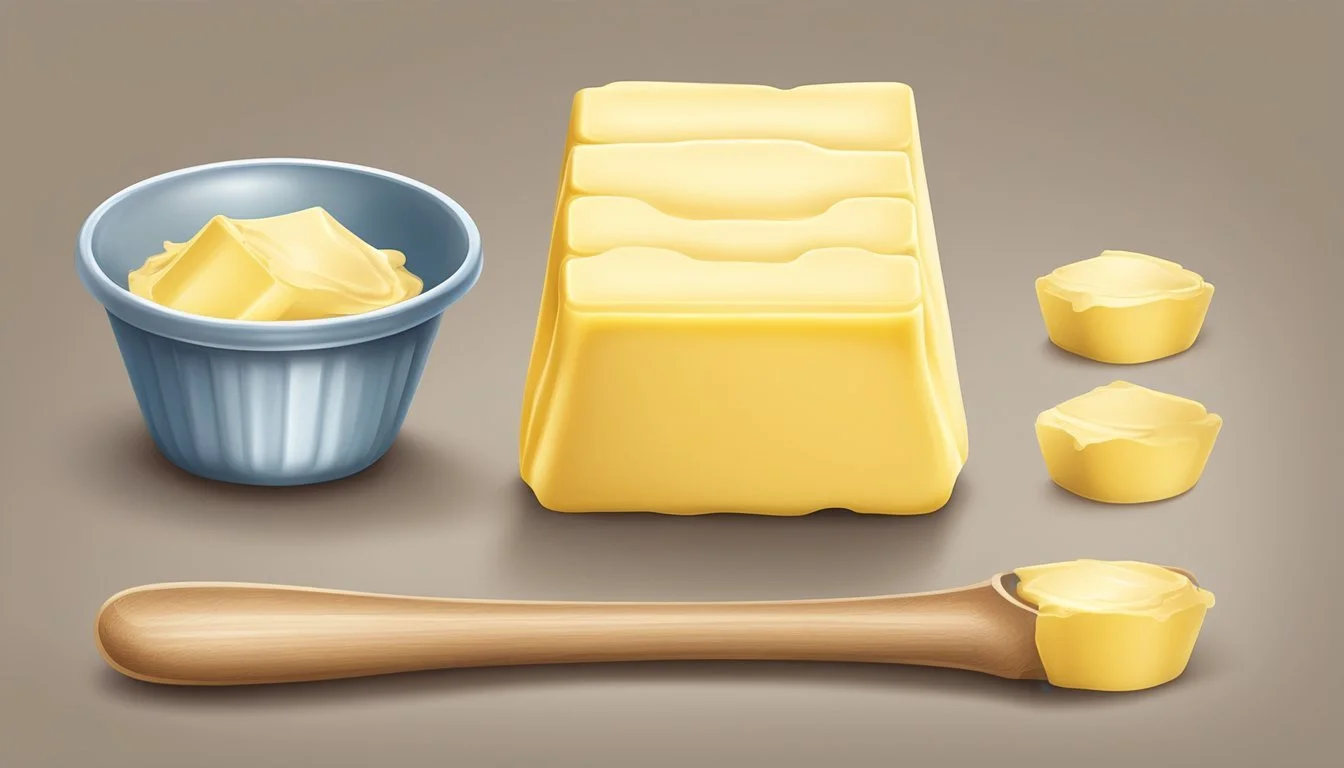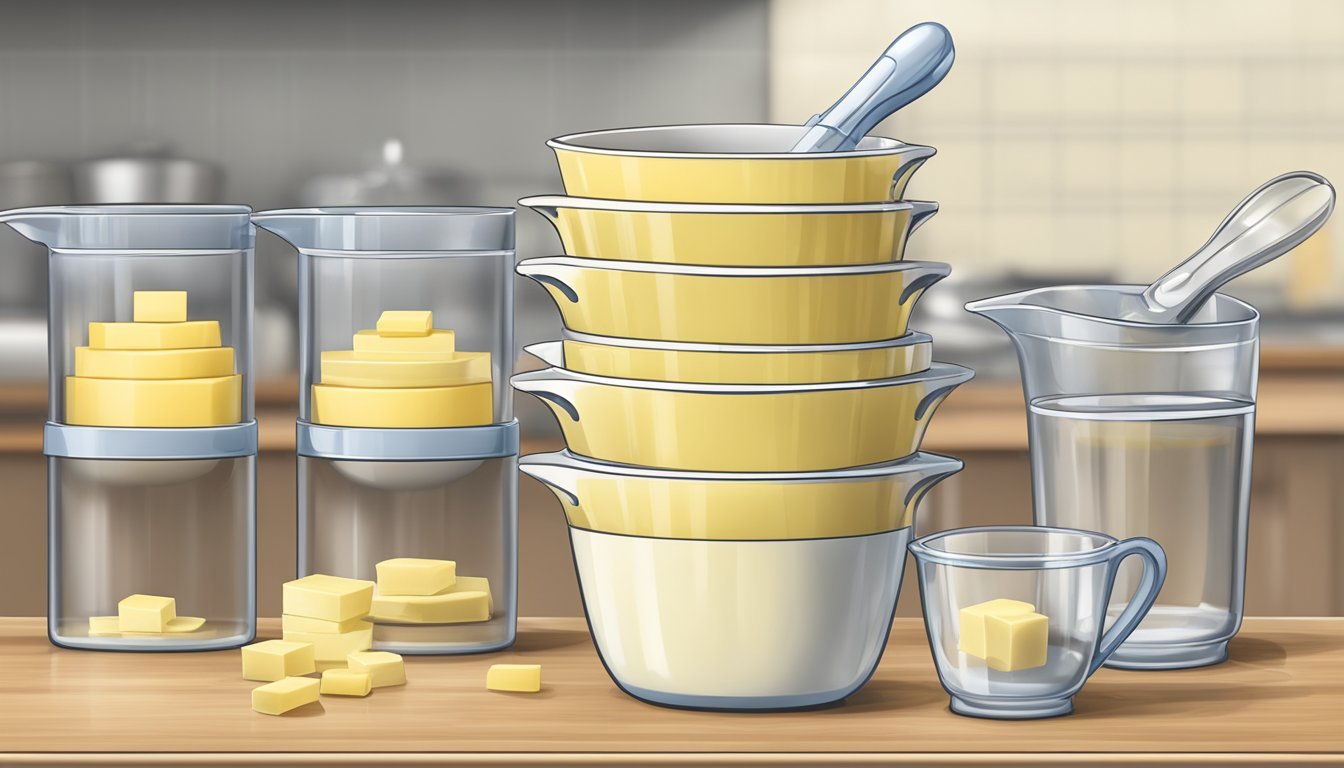How Many Cups in a Stick of Butter?
Quick Conversion Guide
Understanding the conversion between sticks of butter and cups is essential for anyone following a recipe, whether they're a seasoned chef or a home cook. One stick of butter equates to 1/2 cup, which means that two sticks of butter will fill one cup. This simple yet fundamental measure plays a critical role in kitchen arithmetic, ensuring that the balance of ingredients produces the desired outcome in baked goods and other recipes.
Butter is typically sold in pounds, with one pound consisting of four sticks, which aligns with the customary way recipes are written. The standardization of these measurements helps maintain consistency across various recipes and cooking styles. For instance, when a recipe calls for one cup of butter, knowing that it translates to two sticks can be incredibly helpful, especially when precise measurements are crucial to the dish's success.
The conversion becomes even more straightforward when dealing with smaller quantities. Half a stick of butter equals 1/4 cup, or 4 tablespoons, whereas a full stick is 8 tablespoons. This knowledge allows cooks to quickly adapt to different recipe requirements without the need for complex calculations, making the cooking process smoother and more efficient.
Understanding Measurements in Baking
Achieving the desired taste and texture in baking relies on accurately measuring ingredients like butter. This section covers the essentials of measurement, including unit conversion, the importance of precision, and the tools used.
Measuring Basics
In baking, consistency starts with understanding how to measure butter. A stick of butter typically equals 1/2 cup or 8 tablespoons, and knowing this basic conversion is crucial for following recipes correctly.
Common Units of Measure
Bakers commonly use cups, tablespoons (Tbsp), teaspoons (tsp) for volume, while grams (g), ounces (oz), pounds (lb) designate weight. One cup of butter equates to two sticks or 16 tablespoons.
Conversion Fundamentals
Conversions between units are essential:
1 stick of butter = 1/2 cup = 8 tablespoons = 4 ounces = 113.4 grams
1 tablespoon = 3 teaspoons = 0.5 ounces = 14.2 grams A conversion chart can be an invaluable tool for bakers to quickly refer to.
The Role of Precision
Accurate measurements are critical; a slight deviation can alter a dish's outcome. Density and the distinction between weight units versus units of volume underscore the need for measuring accuracy.
Measurement Tools
For dry ingredients, use a kitchen scale for weight or measuring cups for volume. Liquid measuring cups are designed for fluids to account for the meniscus. For butter, the packaging often comes with marked measurements for easy stick to cup conversion.
Size and Packaging
Butter is commonly sold in sticks of butter within a larger package. Each stick is usually half a cup in volume, with a rectangular shape that aids in simple slicing for measurement.
Temperature and Consistency Effects
The consistency of butter—whether melted, softened, or straight from the fridge—can affect measurements. Measuring melted butter requires a liquid measuring cup, while softened butter can easily fill a measuring cup's shape. Note that butter's smoke point may influence how it's used in baking.
Butter Measurement Conversion
When it comes to baking and cooking, precise measurements are critical. Here's how to confidently convert between cups, sticks, tablespoons, grams, ounces, and other volume units for butter.
Cups to Sticks
In the United States, butter is typically sold by weight but often used in recipes by volume. One stick of butter equates to 1/2 cup. Therefore, to convert cups to sticks of butter:
1 cup = 2 sticks
1/2 cup = 1 stick
1/4 cup = 1/2 stick
Tablespoons to Sticks
A single stick of butter contains 8 tablespoons. Here's a quick reference for conversion:
1 stick = 8 tablespoons
1/2 stick = 4 tablespoons
1/4 stick = 2 tablespoons
Grams and Ounces
For those using the metric system or needing to convert recipes from metric to U.S. customary units, understanding the weight of butter is essential. The conversions are as follows:
1 stick of butter = 113 grams = 4 ounces
1/2 stick of butter = 56.5 grams = 2 ounces
Other Volume Units
Besides cups and tablespoons, recipes might call for butter in different volume units. Here are some common conversions:
1 stick of butter = 8 fluid ounces
1 stick of butter = 237 milliliters
Remember that these conversions are most accurate using a liquid measuring cup for volume and a scale for weight. A gallon of butter is far beyond typical household measurements but understanding these smaller units allows for scaling recipes accurately.
Please note, different countries may have different sizes for butter sticks, so always check if the recipe follows U.S. measurements if using these conversions.
Using Butter in Recipes
When incorporating butter into recipes, it's important to understand not only the quantity required but also the various forms butter can take, how it interacts with other ingredients, and what substitutes can be used if needed.
Understanding Recipe Requirements
Recipes often specify butter in terms of sticks or cups. One stick of butter typically equals 1/2 cup. For accuracy, butter should be at the correct temperature—softened or melted—as specified. Most American recipes use these measurements, with density and percentage of fat playing a role in the butter's interaction with flour and other dry ingredients.
Butter Alternatives
When a recipe calls for butter, you can use alternatives like margarine, vegetable oil, or clarified butter depending on the desired outcome. The table below outlines butter substitutes:
Substitute For 1 stick of butter Best Used In Margarine 1 stick Spreads, baking Vegetable Oil 1/2 cup Sautéing, dressings Clarified Butter 1/2 cup High-heat cooking
Baking with Butter
Butter in baking contributes to flavor, structure, and tenderness. When measuring butter for a recipe, ensure it's packed into the cup or measured by weight for consistency. Baking with unsalted butter allows for control over the salt content in the recipe.
Butter Storage and Handling
Butter should be stored in the fridge to maintain its shape and prevent spoilage. For immediate use, it can be softened by leaving it out at room temperature. Butter is best handled by cutting into chunks for even melting or softening.
Culinary Practices
In culinary practice, butter is not just a component; it's a medium for cooking, adding richness to dishes like toast or cream sauces. It's essential to use the right type of butter; for instance, salted butter can affect the taste of a dish if the recipe doesn't account for the extra salt.
Related Information and Resources
Understanding the conversion of butter from sticks to cups is essential for precise measurements in cooking and baking. Accurate conversions ensure the intended texture and flavor of recipes are achieved. The following resources address common queries and provide easy-to-use charts and tools for efficient kitchen calculations.
Frequently Asked Questions
What is the stick to cup conversion for butter? One stick of butter equates to half of a cup.
Can I measure butter without a scale? Yes, the paper wrappings on butter sticks often have lines indicating tablespoons, which can aid in measuring without a scale.
Visual Guides and Equivalents
Visual aids can simplify conversion processes. A standard conversion chart is as follows:
Quantity in Sticks Equivalent in Cups 1 Stick 1/2 Cup 2 Sticks 1 Cup 4 Sticks 2 Cups
Culinary Calculations
For enthusiasts seeking to adjust their recipes with precision, using a butter converter can be particularly handy. It can calculate the necessary quantity of butter in different units—cups, sticks, tablespoons, grams—based on the inputted fraction or percentage of a cup. A reliable butter converter often encompasses various conversions and equivalents commonly used in the culinary world.



